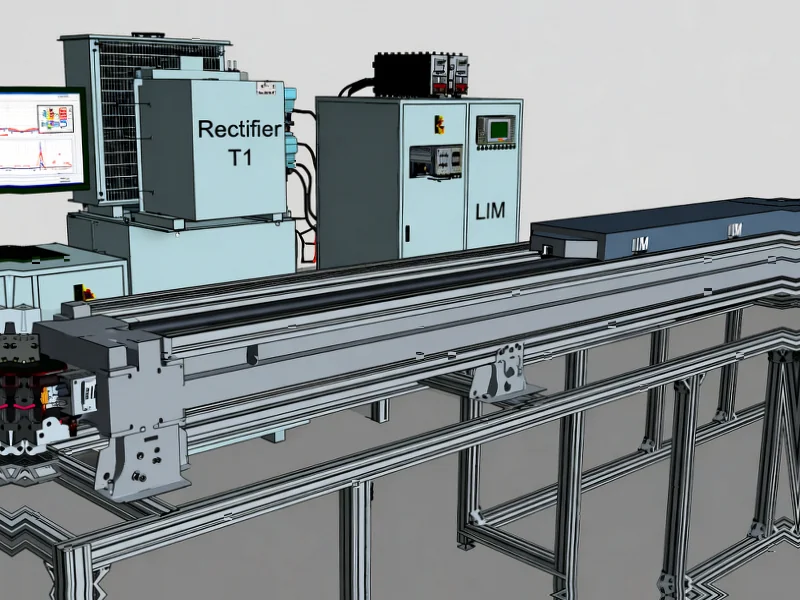According to Nature, researchers have developed an improved control method for linear induction machines (LIMs) used in metro systems that combines terminal sliding mode control with model predictive voltage control. The approach addresses key limitations in conventional control methods by eliminating balancing coefficients and reducing computational complexity while improving dynamic response across the full speed range. This hybrid control system demonstrates significant advantages in simulation testing with a 3 kW LIM prototype.
Table of Contents
Understanding Linear Induction Motor Challenges
Linear induction motors represent a fundamentally different approach to propulsion compared to traditional rotary motors, essentially being “unrolled” versions of conventional induction motors. The unique magnetic flux characteristics in LIMs create specific challenges, particularly the longitudinal end effect that becomes problematic at higher speeds. This phenomenon causes variations in mutual inductance that conventional control systems struggle to manage effectively. Unlike their rotary counterparts, LIMs operate with an open magnetic circuit, which while enabling direct thrust generation without mechanical transmission systems, also introduces efficiency penalties and complex dynamic behavior that require sophisticated control strategies.
Critical Technical Assessment
The research’s approach of combining terminal sliding mode control with model predictive voltage control represents a meaningful advancement, but several practical implementation challenges remain unaddressed. While the elimination of balancing coefficients reduces computational overhead, real-world metro systems operate in environments with significant electromagnetic interference, temperature variations, and mechanical wear that could affect sensor accuracy and control performance. The sliding mode control component, while robust in theory, often faces chattering issues in practice that can lead to mechanical vibrations and accelerated component wear. Additionally, the transition from simulation to physical implementation typically reveals limitations in processor response times and the practical constraints of voltage source inverters operating at the required switching frequencies.
Industry Implications for Urban Transit
This research arrives at a critical juncture for urban transportation systems worldwide. Cities are increasingly investing in automated metro systems that require precise speed control and rapid acceleration/deceleration capabilities. The improved dynamic response demonstrated in this study could enable tighter train scheduling and improved energy efficiency, both crucial factors for modern transit operators. However, the rail industry remains notoriously conservative in adopting new control technologies due to safety certification requirements and the long lifecycle of existing systems. Successful implementation would require extensive field testing and validation under real operating conditions, including emergency braking scenarios and degraded mode operations that weren’t addressed in the current research.
Future Development Outlook
The integration of advanced control theories like TSMC-MPVC represents the continuing evolution of power electronics and motor control, but widespread adoption in commercial metro systems remains several years away. The most likely path forward involves gradual implementation in new transit projects rather than retrofitting existing systems. The computational demands of these advanced algorithms will need to be balanced against the processing capabilities of industrial-grade controllers that must operate reliably for decades in harsh environments. As artificial intelligence and machine learning continue to advance, we may see further hybridization of these control approaches with adaptive algorithms that can self-tune parameters based on operating conditions, potentially addressing some of the robustness concerns inherent in current sliding mode implementations.



